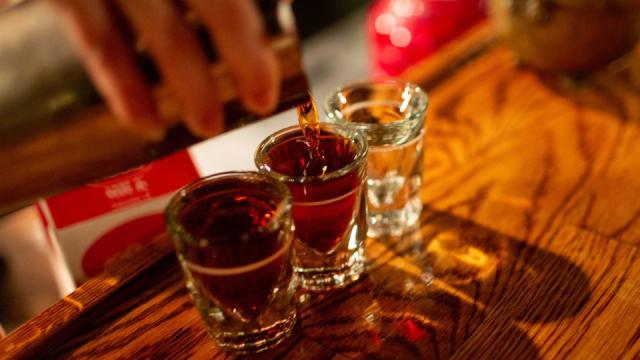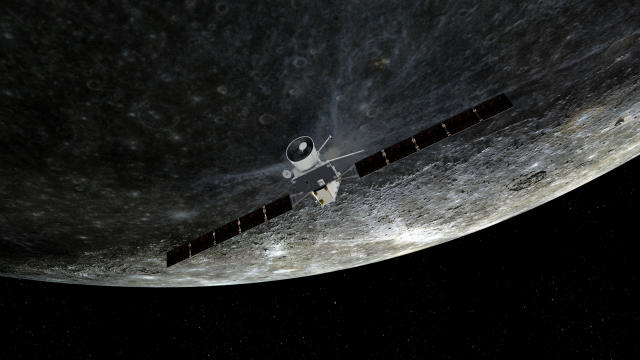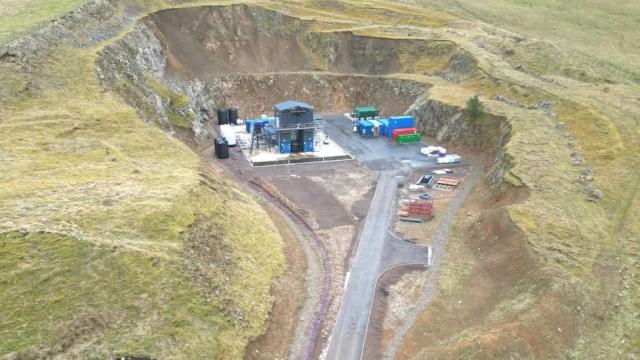Science Daily News | 20 Jun 2023

Views (113)

Loneliness or social isolation linked to serious health outcomes, study finds
Feeling lonely or socially isolated is associated with increased risk of premature death, new research has found.

There have been many studies on the associations between social isolation, loneliness and the risk of dying early, but some results have been controversial or mixed, according to the paper published Monday in the journal Nature Human Behaviour. Those conflicting results could be due to research only focusing on a specific group or region, said Turhan Canli, a professor of integrative neuroscience in the department of psychology at New York’s Stony Brook University. Canli wasn’t involved in the study.
The new paper, however, is a meta-analysis of 90 studies that had examined the links between loneliness, social isolation and early death among more than 2 million adults. Study participants were followed for anywhere from six months to 25 years.
People who experienced social isolation had a 32% higher risk of dying early from any cause compared with those who weren’t socially isolated. Participants who reported feeling lonely were 14% more likely to die early than those who did not.
Social isolation, as defined by the new study, occurs when someone has an objective lack of contact with other people and can involve having a limited network or living alone.
“Americans are spending more and more time in isolation and yet we don’t see it as a danger — particularly if it is by choice. People assume that it’s okay and may even be good for us to be isolated if we don’t feel lonely,” Holt-Lunstad said via email. “Yet this data confirms and expands on previous data that documents the risk associated with social isolation regardless of and independent of loneliness.”
Being socially isolated or lonely can be considered a form of stress, Canli said.
The study authors also looked into the links between loneliness, social isolation and death among people with cardiovascular disease or breast or colorectal cancer — since previous studies have shown that the relationship between social support and health can be a chicken-and-egg matter, “which could lead to a vicious cycle where poor health causes patients to lose social support … over time, but patients tend to need social support more than the general population,” according to the study.
Participants who were socially isolated and had cardiovascular disease were more likely to die early than those without the disease. And socially isolated people with breast cancer had a higher risk of dying from the disease than those who weren’t socially isolated.
Dying early from any cause or cardiovascular disease might also be related to people’s lifestyle behaviors, Canli said: “People who feel socially isolated or lonely tend to have unhealthy habits, such as smoking, alcohol use, poor diet (or) little exercise.”
There are several factors that could contribute to social isolation having a stronger effect on early death risk than loneliness, experts say.
“People who are lonely but not socially isolated have mental health stress but might be resilient to it because of their social networks” — even if those networks aren’t entirely what someone wants them to be, said the study’s first author Fan Wang, a professor of epidemiology at Harbin Medical University in China.
Having a small social network or little to no contact with the outside world can also make someone less likely to receive medical care if they don’t have anyone checking on them, Canli said.
“While this meta-analysis is important in providing corroborating evidence of the detrimental effects of social isolation and loneliness, there is a pressing need to move beyond questions concerning the independent effects to a consideration of their joint interplay,” said Ong, who was also among the scientists involved in the Surgeon General’s report, via email.
This further study would pave “the way for a deeper understanding and effective interventions,” he added.
People experiencing social isolation and loneliness should actively seek social support, Wang said.
“Think of maintaining a social network like any other health-promoting activity: exercising regularly, eating well, looking after yourself,” Canli said. Make cultivating your social connections a priority by not limiting when you say “hey” to someone to just holidays, or by thinking of ways to engage in activities that may expose you to new circles of like-minded people, he added.
Public health strategies to address loneliness and social isolation, including raising awareness, are also needed, Wang said.
Developing interventions with the help of family members and community networks is critical, Wang said. The health care system should also develop methods for identifying social isolation and loneliness in patients so health professionals can provide the appropriate help, he added.
Heavy drinkers really don’t ‘handle their liquor,’ study says
Don’t believe those who say they can handle If someone tells you they can handle their liquor because they drink heavily and frequently, don’t believe it, a new study suggests. They are may be more impaired than they know.

It’s a misnomer that heavy drinkers can “hold their liquor,” a new study found.
Instead, people with alcohol use disorder — what used to be called alcoholism — were significantly impaired on cognitive and motor tests up to three hours after downing an alcoholic drink designed to mimic their typical habits.
“It seems to be a popular perception that experienced drinkers can handle their liquor — like two cowboys in a bar in a drinking competition, and they have some macho strength to take in so much alcohol and handle it,” said study coauthor Nathan Didier, a research analyst at the Clinical Addictions Research Laboratory at the University of Chicago.
The idea that a person can become tolerant of alcohol at higher exposures is “everywhere, all over social media, movies, you name it,” said senior study author Andrea King, a professor of psychiatry and behavioral neuroscience at the University of Chicago.
“Our study found some degree of support for an increase of tolerance,” said King, who specializes in alcohol rehabilitation research, “but it really depends on how much alcohol is consumed, how rapidly and how much time has elapsed since the drinking.”
This finding is significant, King said, since “only about 10% of people with alcohol use disorder go into treatment and binge drinking is on the rise — which is consuming five or more drinks for a man or four or more for a woman within the first two hours of drinking.”
Some go beyond basic binging, engaging in what’s called “high-intensity drinking.” According to the National Institute on Alcohol Abuse and Alcoholism, this pattern of drinking is defined as consuming alcohol at twice the levels of binge drinking.
Moderate drinkers were not added to the study, King said, to draw a clear comparison between the impact of light and heavy alcohol consumption: “People might overlap, and we didn’t want to confuse the distinction,” she said.
The second group in the study were heavy social drinkers, defined as those who drank 10 drinks a week at a minimum and binged alcohol one to five times a month.
The third group included drinkers who met the criteria for alcohol use disorder — 28 or more drinks per week for men and 21 for women — and who frequently binged at least one-third or more days in a month.
“In their daily lives, this group averaged 38.7 drinks a week, compared to 2.5 drinks a week for light drinkers and about 20 drinks for heavy drinkers,” King said.
People in all three groups were tested at two different times: once with alcohol, another with a placebo designed to mimic the alcohol. But each time the study participants were told they might receive a stimulant, a depressant, alcohol or a placebo.
The intoxicating beverage was a flavored mixed drink with 190-proof grain alcohol, measured by body weight to equalize the effect of the liquor across body types. Women, who metabolize alcohol differently than men and can become more easily intoxicated, received a dose that was 85% of that given to men.
“The alcohol level of the drink was equivalent to four to five drinks that produce Breathalyzer readings of 0.08-0.09%, which is the threshold for (drunken) driving,” Didier said.
Before drinking and at various intervals after downing the beverage, alcohol levels were tested. At 30- and 180-minute intervals, participants were asked how impaired they felt on a scale of “not at all” to “extremely.”
Participants also completed two cognitive performance tasks before drinking and at each half-hour interval: One was a fine motor task in which study participants were scored on how quickly they could put pegs into holes; the other was a pencil-and-paper task designed to test cognitive skills.
At first, the study supported the notion that heavy drinkers can manage larger doses without impairment. At 30 minutes, both the heavy drinkers and those with alcohol use disorder had no problems with the cognitive test, while lighter drinkers felt sedated and fatigued, King said. Neither the heavy drinkers nor those with alcohol abuse disorder felt impaired when asked.
However, both of those groups did equally as badly on the task of putting pegs in holes, especially at the 30-minute mark. “We noted that at 30 minutes after consuming alcohol, all the groups were equally impaired,” Didler said.
Heavy drinking does slow mental processing and motor skills, even if the person is used to alcohol. - Kevin Trimmer/Moment RF/Getty Images
Even though the alcoholic drink used in the study was enough to put all participants over the legal limit, people with alcohol use disorder will drink much more heavily and more quickly, King said.
To see if those with the disorder would be impaired at higher levels of alcohol that more closely mimicked their typical intake, researchers gave 60 participants who had alcohol use disorder another drink. This drink contained a level of 190-proof alcohol that was the equivalent of seven to eight standard drinks.
At the higher dose, people with alcohol use disorder had 50% more mental and motor impairment than they had after taking the lower dose, the study found. In addition, they did not get completely back to their baseline level of performance after three hours.
“What this study does is put a spotlight on the limitations of tolerance,” Didier said. “Even if you have a lot of experience drinking, that doesn’t mean that you’re not impaired — that’s an important takeaway.”
Devon seeing a boom in dragonfly populations, expert says
Devon is seeing a boom in dragonfly populations due to severe drought in Europe, an expert says.

Severe drought in Europe has caused an explosion in migrant dragonfly populations in Devon, an expert says.
Dave Smallshire, the Devon recorder with the British Dragonfly Society, said recent warm weather had made the county an "escape zone" for migrating dragonflies.
He said there were nearly three times more sightings of the insect in the county than an average year.
"We are undoubtedly getting things that are fleeing," he said.
"They are looking for a climate that is suitable to them and we have had the most wonderful four weeks or so of hot, sunny and dry weather with light winds and that is absolutely perfect for the adult dragonflies."
Mr Smallshire, from Chudleigh, said severe droughts in the Mediterranean had dried out the wetlands in which dragonflies live, forcing them north.
Easterly and north-easterly winds have then dispersed them in the direction of southern England, he added.
Mr Smallshire said the vagrant emperor species of dragonfly could be migrating from as far south as the Sahara.
"I would say we are an escape zone," he said.
"We're a degree warmer than we were 50 years ago and that makes a big difference if you're a dragonfly."
The odonatologist said the boom in dragonflies was good news for some species of birds that have struggled to find food.
"One of the reasons house sparrows have been doing very badly in the last decade in Britain is the chicks have been starving - they do not have enough insect food to eat," he said.
"Dragonflies are big, juicy protein packs."
The county has about 30 species of dragonflies and damselflies - none of which will survive the winter, Mr Smallshire said.
Dragonflies spend most of their lives underwater but after emerging as adults, they can survive for as long as two to three months.
Mr Smallshire added that recent hot weather that brought migrant dragonflies to UK in the first place may also eventually cause wetlands to dry out here.
He said: "Ponds and streams, and rivers in some cases, are under threat."
Additional reporting by PA Media
Europe's BepiColombo spacecraft to zoom within 150 miles of Mercury in close flyby today
Europe's Mercury probe BepiColombo will take a close look at its target planet on Monday(June 19), and we can expect some exciting new images soon after that.

Europe's Mercury probe BepiColombo will take a close look at its target planet on Monday (June 19), and we can expect some exciting new images to reach Earth soon after that.
"As BepiColombo starts feeling Mercury's gravitational pull, it will be traveling at 3.6 km/s [2.2 miles per second] with respect to the planet. That's just over half the speed it approached during the previous two Mercury flybys," Budnik said.
The flyby will further reduce the spacecraft's velocity magnitude compared to the sun by 0.5 miles per second (0.8 km/s), and change its direction by 2.6 degrees, Budnik added.
There will be three further Mercury flybys before BepiColombo is finally slow enough to be captured by the rocky planet, which is only somewhat larger than Earth's moon: in September 2024, in December that same year and the final one in January 2025.
Since some of the spacecraft's instruments are operational during the journey, scientists are excited to use the opportunity to make measurements of the boiling environment around Mercury. BepiColombo also carries three low-resolution monitoring cameras that will be busy snapping black-and-white images of the little-explored rocky word during the flyby.
The previous two Mercury flybys have already produced interesting science results, Johannes Benkhoff, BepiColombo project scientist at ESA, said in the statement. The probe made the first-ever measurements of the planet's feeble southern inner magnetosphere, for example, and revealed the composition of charged particles in this region.
"Collecting data during flybys is extremely valuable for the science teams to check their instruments are functioning correctly ahead of the main mission," Benkhoff said. "It also provides a novel opportunity to compare with data collected by NASA's MESSENGER spacecraft during its 2011–2015 mission at Mercury from complementary locations around the planet not usually accessible from orbit."
Related stories:
The BepiColombo spacecraft consists of two orbiters that are currently cruising through the solar system stacked on top of each other. As a result of that, some of the probes' instruments are covered during the cruise. But during the Monday flyby, two instruments designed to measure the shape of Mercury's surface and study its gravitational field will collect data for the first time. The orbiters' main, high-resolution cameras, unfortunately, won't be available just yet.
Two probes have previously studied Mercury up close. NASA's Mariner 10 flew past Mercury three times in 1974 and 1975, obtaining the first-ever images of the scorched planet. And NASA's MErcury Surface, Space ENvironment, GEochemistry, and Ranging' (MESSENGER) mission orbited the planet from 2011 to 2015.
Rocket firm Skyrora starts tests on 3D-printed engine
Skyrora says it is conducting "full duration" tests in Midlothian on an updated engine design.

Rocket company Skyrora has started testing a new 3D-printed engine as it works towards its first commercial orbital launch.
The firm said it was carrying out "full duration" tests on an updated engine design at its Midlothian testing site.
The new model was 3D-printed by its Skyprint 2 machine, which Skyrora said halved production time and cut costs.
The Edinburgh-based company is planning orbital launches from Scotland, using its Skyrora XL vehicle.
These will take place from the SaxaVord Spaceport being developed on Shetland, subject to approval by the Civil Aviation Authority.
The new engine design features an improved engine cooling chamber, the company said.
The engine tests will each run for 250 seconds, the same amount of time involved in a real mission to reach orbit.
The trials at Skyrora's site at Gorebridge are due to take place up until the summer.
Chief executive Volodymyr Levykin said: "The new models of 3D printed engines are bringing Skyrora closer towards efficient commercial orbital launch.
"The new engine technology developed by Skyrora's engineers and the commitment to a sustainable design are a testament to the innovation taking place in the UK space sector."
Skyrora has been working with the Civil Aviation Authority to progress its orbital launch vehicle licence application, which was submitted last year.
The company was aiming to get its vehicle above 100km (62 miles) in a flight from the Langanes peninsula in Iceland.
But a technical problem saw the 11m-long rocket fall back into waters no more than 500m from the launch pad.
The sub-orbital flight was intended as an early chance to test systems and procedures.
NASA recognizes Juneteenth with ceremonial flag-raising (photos)
NASA held a flag-raising ceremony on Thursday (June 15) to recognize the Juneteenth holiday.

NASA held a flag-raising ceremony on Thursday (June 15) to recognize the Juneteenth holiday.
Following Nelson's short address, the Juneteenth flag was hoisted to wave alongside NASA's agency flag and the U.S. national flag, all three now flying in front of NASA headquarters.
Juneteenth grew into wider public awareness throughout the U.S. during the 2020 civil rights protests and was declared a federal holiday by President Joe Biden in 2021.
RELATED STORIES:
Following the flag-raising ceremony, Nelson and Delgado posed for a photo next to the NASA headquarters sign, underneath the draped flagpoles standing above them.
0 Likes
